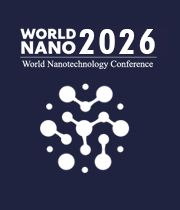Title : Biosynthesis and characterization of garcinia Mangostana-derived silver nanoparticles as a novel nanobiopesticide against Sspodoptera Litura
Abstract:
This study presents the green synthesis of silver nanoparticles using the pericarp extract of Garcinia mangostana (Clusiaceae) (Gm-AgNPs), a plant rich in bioactive phytochemicals, as a sustainable approach to combat the polyphagous pest Spodoptera litura. The aqueous extract, containing phenolics (p-coumaric acid, sinapic acid), xanthones (α-mangostin), and flavonoids (quercetin, epicatechin), facilitated the rapid reduction of silver ions into stable Gm-AgNPs. Nanoparticle formation was confirmed via UV–visible spectroscopy, showing a characteristic surface plasmon resonance peak at 432 nm. Advanced characterization techniques, including FTIR, TEM, XRD, and DLS, revealed spherical nanoparticles with a crystalline face-centered cubic structure, averaging 12.2–30.4 nm in size. FTIR and GC-MS/LC-MS analyses identified hydroxyl, carbonyl, and aromatic functional groups in the phytochemicals, underscoring their dual role as reducing and stabilizing agents during synthesis. The larvicidal potential of Gm-AgNPs was evaluated against sixth-instar S. litura larvae via leaf-dip bioassays using Ricinus communis foliage. Dose-dependent mortality was observed, with 74.67% larval mortality at 100 mg/mL after 48 hours and an LC?? of 25.29 mg/mL. Biochemical assays revealed a significant reduction in cholesterol levels within the midgut and hemolymph of treated larvae, suggesting disrupted sterol metabolism. Molecular docking simulations demonstrated strong binding affinity (−7.4 kcal/mol) between α-mangostin—a major xanthone in the extract—and Sterol Carrier Protein-2 (SCP-2), a critical mediator of sterol transport. This interaction likely impaired cholesterol uptake, compromising larval growth and development. Proteomic profiling of larval midgut tissues via SDS-PAGE and LC-MS/MS highlighted Gm-AgNPs’ multifaceted mode of action. Key energy metabolism proteins (e.g., ATP synthase) and antioxidant enzymes (superoxide dismutase) were downregulated, indicating metabolic suppression and oxidative stress. Conversely, detoxification proteins, including cytochrome P450 monooxygenases, were upregulated, reflecting larval attempts to counteract nanoparticle-induced toxicity. Notably, SCP-2 expression was significantly reduced (log?FC −2.12), corroborating sterol transport disruption. These findings demonstrate Gm-AgNPs’ efficacy as a plant-based nano biopesticide, leveraging phytochemical synergism to impair sterol dynamics, metabolic processes, and detoxification mechanisms in S. litura. The study underscores the promise of biosynthesized nanomaterials as eco-friendly, high-precision tools for sustainable pest management, aligning with global agricultural sustainability goals.
Keywords: Green-synthesized silver nanoparticles, Spodoptera litura, Sterol metabolism disruption, Proteomic analysis, Sustainable nano biopesticides



